Human-Centric Leadership
Revitalizing Leadership: The Impact of Post-Vacation Rest Days

Photo by David Vives on Unsplash
The concept of a rest day following a vacation is nothing new. Scheduling the day is. The practice holds transformative potential, especially for those steering the ship.
Why is a post-vacation rest day so pivotal? The answer lies in understanding the unique pressures business leaders face. The mental and physical demands can be intense in a sector where human-centric leadership, systems, marketing, and technology strategies are present. Leaders often engage in a perpetual balancing act, juggling operational excellence with visionary thinking. While offering a respite, a vacation often fails to provide complete recovery from these demands as it has its own set of challenges. You need a day to decompress.
Enter the concept of a rest and recoup day. This additional day, tacked on at the end of a vacation, serves as a buffer. It allows you to transition from the relaxation mode back to their high-energy, high-impact roles. This transition period is not merely about physical rest. It’s a mental and emotional recalibration, allowing leaders to reflect, assimilate new ideas, and return to their roles with renewed vigor and clarity.
The impact of this practice extends beyond the individual. It permeates the entire organization. Leaders who take this time to rest and recoup bring back more than just rejuvenated energy; they get a renewed sense of purpose. This can lead to more effective decision-making, improved team dynamics, and overall organizational morale and productivity.
Moreover, a well-rested leader is better equipped to embrace new contrarian ideas in an industry where systems, processes, disciplines, and routines are increasingly intertwined. The rest day can serve as a crucible for incubating new strategies and solutions that might have sparked during the vacation but needed space and tranquility to mature.
But how can a leader in the multifamily space justify this additional day in an already packed schedule? It’s about recognizing the long-term benefits over the short-term time investment. This day can be seen as a strategic tool for enhancing personal effectiveness and, by extension, the organization’s success.
The practice also sets a powerful example for the team. It underscores the importance of well-being and balance, values that are critical in today’s workplace culture. By prioritizing this, leaders in the organization send a clear message: the health and wellness of the individual are integral to the health and wellness of the organization.
Share this:
Embracing Curiosity Over Judgment: A New Paradigm for Multifamily Leadership

Photo by Andrew Neel on Unsplash
The wisdom of an unknown author’s words, “Be curious, not judgemental” (Not Walt Whitman or Ted Lasso), has never been more pertinent. Let’s explore how multifamily leaders can leverage the power of curiosity to drive innovation, foster a workplace culture driven by excellence, and ultimately achieve tremendous success.
The Power of Curiosity in Leadership
Curiosity, the eagerness to know or learn something, is a fundamental trait that can transform leaders. It’s about asking questions, exploring new possibilities, and being open to different perspectives. Unlike judgment, which often closes doors and creates barriers, curiosity opens pathways to understanding and collaboration.
Curiosity is the catalyst for innovation. Leaders who encourage questions and fostering a culture of inquisitive thinking are more likely to stay ahead of industry trends. They can harness technology advancements, refine operating strategies, and develop human-centric systems that resonate with team members, residents, and supplier partners.
Curiosity and Human-Centric Leadership
A curious leader is, fundamentally, a human-centric leader. Such leaders recognize the value of understanding their teams’ and residents’ diverse experiences and needs. By adopting a curious mindset, multifamily leaders can create environments where everyone feels valued and heard, leading to higher engagement and satisfaction.
This approach aligns perfectly with the core principles of human-centric leadership. It involves empathetic listening, open communication, and a genuine desire to understand the aspirations and challenges of others. In a sector where the human element is as crucial as the physical infrastructure, nurturing these human connections can be a game-changer.
Curiosity as a Tool for Market Insight
In Multifamily, understanding market dynamics is crucial. A curious leader doesn’t just rely on data and reports; they dive deeper. They engage with residents, seek feedback, and are always on the lookout for emerging trends and resident preferences. This information is invaluable in shaping strategies that are both responsive and forward-thinking.
Moreover, a curious approach to market analysis can reveal opportunities in seemingly mundane data. Leaders can uncover hidden patterns and insights to inform more effective marketing and operational strategies by questioning the status quo and exploring data from different angles.
Curiosity in Overcoming Challenges
The industry is not without its challenges. From quirky municipalities to economic fluctuations, leaders face a plethora of obstacles. A judgemental approach might lead to quick, possibly flawed decisions based on preconceived notions. In contrast, a curious leader examines challenges from multiple perspectives, seeking innovative solutions that are both effective and equitable.
Implementing a Culture of Curiosity
Multifamily leaders can take several steps to foster a culture of curiosity. Encouraging open dialogue, rewarding innovative thinking, and providing continuous learning opportunities are just a few examples. It’s about creating an environment where questioning is accepted and celebrated.
Leaders can also lead by example. By demonstrating their curiosity, asking questions, and showing a willingness to learn and adapt, they set a powerful precedent for their teams.
Share this:
Mastering the Game of Life and Leadership: Insights from Florence Scovel Shinn

Photo by Mark Cruz on Unsplash
In the world of personal branding and leadership, particularly in the multifamily space, the wisdom of Florence Scovel Shinn is profoundly relevant. Her assertion that life is not a battle but a game encapsulates a philosophy that resonates deeply with leaders striving to create a lasting impact.
The multifamily space, bustling with innovation and growth, is a fertile ground for leaders to apply this philosophy. The essence of Shinn’s message lies in perceiving challenges not as obstacles but as opportunities to demonstrate skill, strategy, and resilience. This mindset is crucial for leaders building a personal brand, as it encourages a proactive approach to problem-solving and fosters a reputation for being adept and adaptable.
In multifamily leadership, embracing Shinn’s philosophy means navigating with agility and leveraging technology to enhance both the customer experience (CSX) and the team member experience (TMX). A leader who views these responsibilities as part of a strategic game is more likely to innovate and succeed.
The statistical backing for this approach is evident. A study by Deloitte highlights that leaders who embrace agile methodologies and innovative thinking tend to drive their organizations toward higher profitability and market relevance. Furthermore, a report by PwC indicates that real estate leaders who adopt a game-like approach to challenges are better equipped to handle market volatility and technological disruptions.
The essence of turning life’s battles into a strategic game is particularly pertinent in the realm of marketing and systems strategies. A leader who views each marketing campaign or system implementation as a chess move is more likely to anticipate team members’ and residents’ needs.
Moreover, the human-centric approach to life, a cornerstone of Shinn’s philosophy, aligns seamlessly with the multifamily industry’s focus on creating communities, not just buildings. Leaders who view their interactions with residents and team members as part of a giant game of human connection are more likely to foster loyalty and a solid personal brand.
In essence, Shinn’s philosophy invites leaders to view each day as an opportunity to make strategic moves that enhance their brand, contribute to their organization’s success, and positively impact the lives of those they serve. By adopting this game-like mindset, leaders in the multifamily space can navigate the industry’s complexities gracefully and effectively.
Share this:
Redefining Leadership: How Customer-Centricity Upends Traditional Hierarchies in Multifamily

Photo by Erik Mclean on Unsplash
Customer-centricity is the crux of successful business strategies; the incisive observation by Kjell Nordstrom and Jonas Ridderstrale in “Funky Business” — “Hierarchy is an organization with its face toward the CEO and its ass toward the customer” — serves as a clarion call for a paradigm shift in organizational structures, especially in the multifamily leadership space. Rearrange the hierarchies.
This thought-provoking statement challenges the traditional top-down hierarchy where the focus is predominantly on appeasing the upper echelons of management. In such a model, customer needs and front-line innovations often take a backseat, creating a disconnect between the service providers and the end users. This disconnect is particularly detrimental in industries like multifamily, where customer satisfaction is paramount.
A study by Deloitte highlights that customer-centric companies are 60% more profitable than companies not focused on the customer. This statistic alone underscores the necessity for a shift in perspective. The stakes are even higher in multifamily spaces, where residents are not just customers but community members. A customer-centric approach in these environments doesn’t just drive profitability; it builds communities and enhances lives.
Leaders in the multifamily space are thus poised at a crucial juncture. The challenge is transitioning from traditional hierarchies to more fluid, agile organizations that place customer needs at their core. This involves empowering employees at all levels to make decisions that enhance customer satisfaction, thereby fostering a culture of innovation and responsiveness. In a way, it brings a case against centralization.
For multifamily leaders building their brands, embracing this customer-first approach is not just a strategy but a brand statement. It’s about being known as a visionary who values the voice of the customer as much as the bottom line. Leaders like Jeff Bezos, who famously leaves an empty chair in meetings to represent the customer, exemplify this approach. In the multifamily context, this could translate into policies prioritizing resident feedback, community engagement initiatives, and a relentless focus on enhancing the resident experience.
In this landscape, the role of technology, especially PropTech, becomes pivotal. PropTech solutions can provide deeper insights into customer preferences, streamline operations, and enhance customer experience. As leaders integrate these technologies, they improve operational efficiency and demonstrate a commitment to innovation and customer-centricity.
Furthermore, embracing a human-centric leadership style, which involves empathy, active listening, and genuine engagement with customers and team members, can redefine the essence of leadership in the multifamily space. This approach aligns with the growing demand for authenticity and transparency in leadership.
Share this:
From Setback to Success: Multifamily Leadership Lessons Inspired by Bob Dylan’s Timeless Wisdom

Photo by Viktor Forgacs on Unsplash
Leadership is a role and a journey of constant evolution, resilience, and foresight. Drawing inspiration from Bob Dylan’s iconic lyric, “the loser now will be later to win,” we delve into the transformative lessons for leaders in this dynamic sector.
The Ebb and Flow of Success
The multifamily industry, with its forever-changing set of challenges and competitive business environment, often mirrors the unpredictability of life itself, as encapsulated in Dylan’s profound words. Leaders face the inevitability of ups and downs, successes, and setbacks. However, it’s the perspective toward these fluctuations that defines authentic leadership. The ‘loser,’ or leader facing a setback today, possesses the potential to emerge as a winner tomorrow. This transformative journey hinges on resilience, adaptability, and a deep understanding of market dynamics.
Cultivating Resilience in Leadership
Resilience is more than mere survival; it’s about thriving amidst challenges. For multifamily leaders, this means weathering economic fluctuations or market changes and using these experiences to build a stronger, more agile business model. It’s about learning from each setback, integrating these lessons, and preparing for future success. This resilience becomes a beacon, guiding teams and the broader community through uncertainty toward stability and growth.
Adaptability: The Key to Future Wins
The multifamily space continuously evolves, driven by technological advancements, changing consumer behaviors, and regulatory landscapes. We are living through the most dramatic shift as I write these words. Adaptability is not just a skill but a necessity for leaders. Embracing new technologies, shifting marketing strategies, and reimagining operational efficiencies are not just routes to recovery from setbacks but pathways to future wins. Leaders who adapt swiftly and effectively position their organizations to capitalize on emerging opportunities and trends. Put in the reps now for the future yield you will receive.
Understanding and Anticipating Market Dynamics
Like any other, the multifamily industry is subject to the whims of the market. Leaders who understand and anticipate these changes can turn potential losses into wins. This involves understanding economic indicators, consumer preferences, and competitive strategies. Leaders can make informed decisions, anticipate shifts, and pivot strategies by leveraging data analytics, a robust mastermind advisory group, and market research.
The Human-Centric Approach to Leadership
Multifamily leadership goes beyond numbers and strategies; it’s inherently human-centric. Building communities, fostering inclusive environments, and ensuring resident satisfaction are as crucial as financial metrics. Even in challenging times, leaders who prioritize these aspects lay the groundwork for long-term success. Leaders can transform temporary setbacks into lasting achievements by nurturing trust, fostering collaboration, and championing innovation within their teams and communities.
Empowering Teams to Embrace Change
Leadership is not a solitary endeavor but a collective effort. Empowering teams to embrace change, encouraging innovative thinking, and fostering a culture of continuous learning are crucial. This empowerment leads to a resilient and adaptive organization, ready to face challenges and seize opportunities.
Conclusion
Bob Dylan’s timeless lyrics resonate deeply within the multifamily leadership landscape. The journey from ‘loser’ to ‘winner’ is not about avoiding setbacks but learning from them, adapting, and emerging stronger. It’s a testament to the power of resilience, adaptability, and a human-centric approach in navigating the multifamily industry’s dynamic terrain.
Share this:
- Page 1
- Page 2
- Page 3
- Interim pages omitted …
- Page 8
- Go to Next Page »

